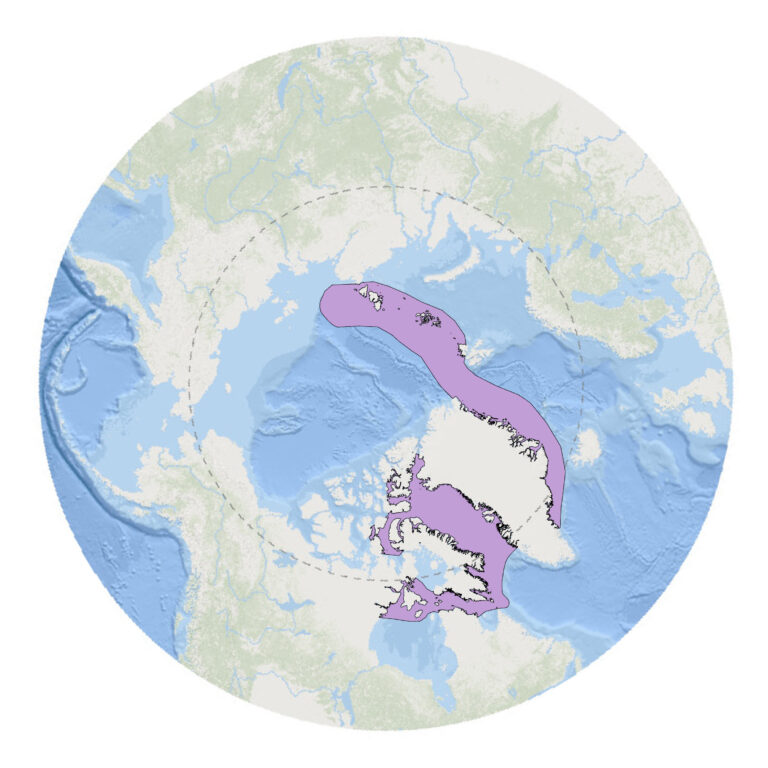Least concern (assessed July 3, 2017)
Narwhals are marine mammals that live in the Arctic Ocean with most of their population living around Western Greenland and Canada. They are one of two living members of the family Monodontidae (“one tooth family”), the other being Belugas. Narwhals are social animals that live in pods that can range from five to a thousand depending upon the season. Like most mammals, Narwhals give live birth to calves after a gestation period of 14-15 months. The calves usually wean for two years and reach sexual maturity around five to eight years of age. On average, Narwhals can live to the age of 50. Narwhals rely on hunting fishes and squids, such as Arctic cod and Greenland halibut for their food. They hunt near the coast, traveling through the cracks in sea ice. Narwhals are also hunted by Orcas, Polar Bears, Greenland Sharks. Narwhals are most famous for their tusk, which is a tooth that comes out from their upper lip, giving them the nickname, unicorn of the sea. The tusk is one of the two teeth Narwhals have.
Narwhals have been part of the traditional diet of Inuit people. All parts of Narwhals are used and/or consumed as food. Especially the raw skin and blubber are eaten as a food called maktaaq. There is evidence of Narwhal hunts going as far back as 2000 years. In Inuit culture, there are many versions of the origin story of Narwhal. In one version, a woman with a rope tied around her waist was dragged into the ocean by a whale, where she transforms into a Narwhal with her hair pleated into a tusk.
While Narwhals are currently under the least concern status, they have been extensively hunted for their blubber and tusk in the past. Not too long ago, they used to be classified under near-threatened status. Most countries have now enacted bans on the trade of Narwhal tusk. One threat to Narwhals and their habitat is global climate change. Climate change is heating the Arctic at twice the rate of the rest of the planet. This means a change in habitat and diet for Narwhals. Recent data has shown that Narwhals are consuming more and more low-nutrition fishes such as Capelins. This is likely due to change in the ranges of animals with changing ocean conditions, such as temperature. Climate change has also brought differing trends in sea ice, which affect Narwhals' hunting and breathing abilities. Like all marine mammals, Narwhals come up to the surface to breathe air and a reduction in leads and cracks in sea ice could mean Narwhals have fewer chances of movement and breathing. Narwhals are also hunted by Orcas, and as the oceans get warmer, Orcas can gain more access to the Narwhal habitats and lead to a reduction in the population of Narwhals.
The genome sequence of Narwhals revealed that their population has a very low genetic diversity. This means, when compared to other species, the DNA of one individual is not very different from that of another. In many animals, low genetic diversity usually means that the population of the animal has a high level of inbreeding. But in Narwhals, research has shown that the low genetic diversity could have occurred to allow Narwhal to gradually adapt over an extended period, instead of inbreeding. Yet, low genetic diversity can imply that the species (or population) can be very susceptible to diseases.

© Arctic Institute of North America | Site & Image Information